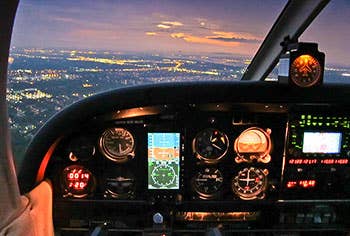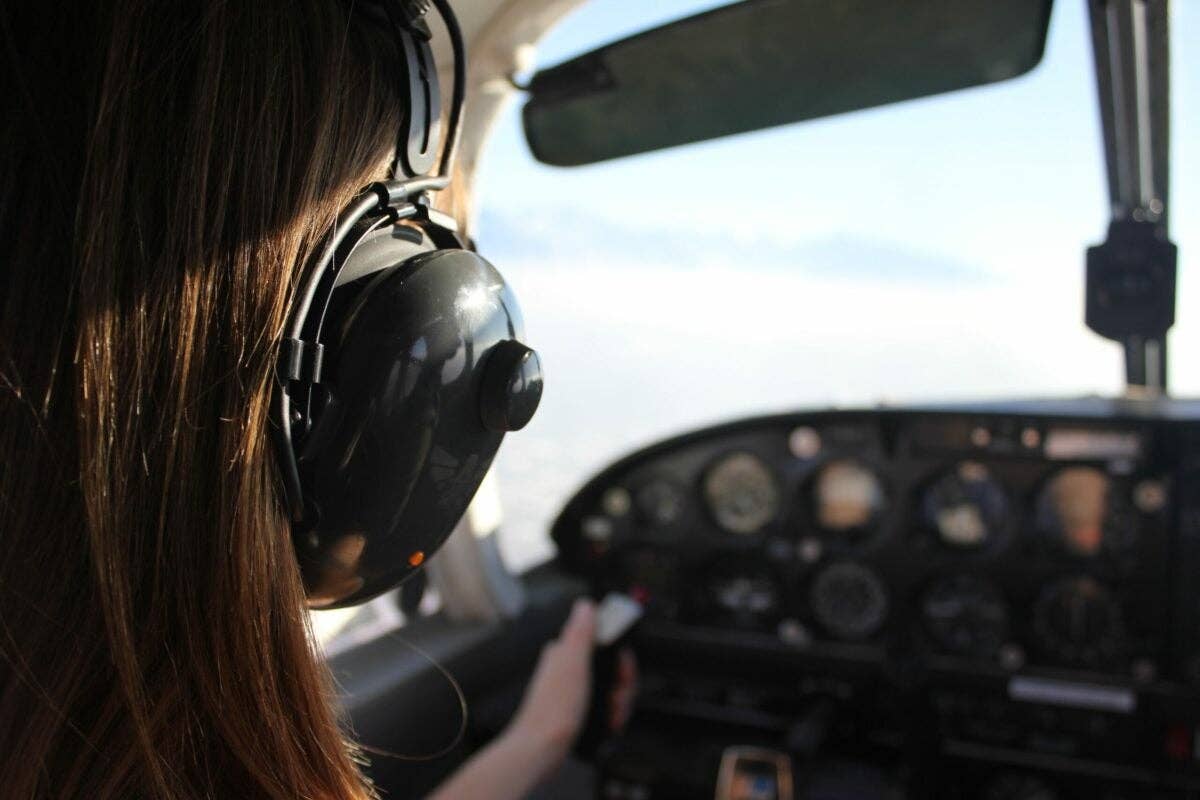The Search for Multiengine Time
The challenge of getting quality multiengine time is a theme throughout the development of a professional pilot’s career.

How much multiengine time you need varies, but it is essential for many flight careers. [Shutterstock]
If you are planning on a job in the corporate or airline world, you will need to have logged pilot in command (PIC) time in a multiengine aircraft. How much time you need varies by job. If you pay for it out of pocket, it will likely be among the most expensive time you log—so make sure you get your money's worth.
Multiengine cross-country time is especially coveted, so plan for it. Several of my airport children (the pilots I have trained over the years) saved up their money for time-building programs. These are often put on seasonally in parts of the country known for good weather. The pilots spend a few weeks flying cross-country every day at 55 to 60 percent power. Alternatively, a few lucky ones have had a parent or a buddy who loaned them the use of a multiengine aircraft, and they shared the time with another pilot for the price of fuel.
- READ MORE: How To Earn a Multiengine Rating as a Pilot
It is more than hours in the logbook. Make that time experience that benefits you more than a metric, says a former colleague who is now at a major airline. While it is tempting to go back and forth to the same airport in the same airplane for several weeks just to get hours—and does meet the letter of the law—the quality of the experience is dubious. Mix it up, go to a variety of airports, and if the aircraft is IFR capable, throw in a few approaches in actual IFR or night if able.
When we worked together, the aforementioned colleague was one of three multiengine instructors on staff. I was "self-loading ballast" in the Piper PA-34 Seneca. I had just started studying for the multiengine commercial certificate, and if I didn't have a client at the time, I was invited to go along for the ride. With me in the back, they didn't need to add a suitcase full of flat weights to keep the aircraft within weight and balance. Legally, I could not log the time I spent back there. I mention this because I have encountered pilots who insist their ride-along flights count as “time logged” in the aircraft. (Reaches for FAR/AIM) FAR 61.51 has the details on logging time, and I assure you there is no reference to sitting in the back of the aircraft. If you are in the cockpit and manipulating the controls under the guidance of a multiengine instructor (MEI,) it can be logged as dual received, but if you don't have a multiengine certificate, you cannot log it as PIC or second in command (SIC) if the aircraft requires a second pilot.
Teaching in a Multiengine Aircraft
In order to legally teach in a multiengine aircraft, the person must hold a multiengine instructor certificate and, per FAR 61.195 (f), have logged has at least five flight hours of PIC time in the specific make and model of multiengine aircraft, be it an airplane, helicopter, or powered lift if appropriate.
This can present a challenge when the instructor earned their multiengine certificate in an airframe other than what the school uses for training. Who pays for the five hours of required PIC time in the school airplane can be a contentious topic. Sometimes an instructor will try to pressure a learner into paying for those five hours. "Pay for me to get my five hours, and I will teach you to fly the twin." This is risky business, because if the MEI is hired away before you finish your training, you are out of luck and money. Plus, you will still be on the hook for the cost of the airplane and instructor during your training flights.
Sometimes it doesn't make sense for the instructor to shell out the $1,500 to $2,000 for those five hours when they will make just $25 to $40 an hour teaching in the aircraft if—and it is a big if—they get a multiengine client. That money might be better spent on cross-country hours in a twin they already have experience in, even if it means going to another school to get it.
Be wary of "opportunities" to build time with ferry flights. Get the details before you commit. It's not uncommon to hear about pilots who make plans to do this or consider this, then a little bit of research makes them think twice.
A few years back, I was invited to help ferry a PA-44 Piper Seminole from North Dakota to Puyallup, Washington, where it would join the fleet at the flight school. This ferry flight was going to be in the dead of winter. I already had my MEI certificate and 70 hours in a multiengine aircraft, of which 50 or so were as PIC, including three hours in a PA-44. I needed two more hours in the PA-44 in order to be able to teach in it. I knew the ferry flight would definitely provide those two hours, and I was considering it until I learned I would be flying with another MEI on staff, provided I paid all his expenses during the trip as well as my own. That didn't seem fair to me, since I didn't need him for the flight to be safe or legal, and on top of that, he was on salary at the school, and therefore he was already getting paid for the flight. On the other hand, I was paid by the hour and would be losing out on at least a week's worth of dual instruction. I figured those two hours I needed to teach in the Seminole would run me about $600 tops. I made a lot more than that a week, so I declined the offer.
Multiengine Maintenance
Beware of the FBO where the multiengine aircraft are flown very little. These ramp or hangar queens can develop the mechanical issues that accompany the lack of regular flight.
A fellow MEI told me a story about an issue he had with the maintenance at a particular flight school during the pursuit of his multiengine commercial certificate. He planned to spend a week at the school to knock out the rating. The weather was good, the MEI available, but during their second flight the landing gear on the Piper Seneca wouldn't retract. They cut the flight short, returning to the airport. The MEI said it was nothing to worry about, and he would have the mechanics check it out so they could fly the next day. There was something in the MEI's demeanor that made the learner wary, so he surreptitiously placed chalk marks on the rear of the tires, with the thought being that if the aircraft moved and the landing gear was retracted, they would be erased.
The next day when he came to fly, he was told the mechanics had made repairs and test flown the aircraft that morning. However, when he checked the tires, he saw the chalk marks still in place and undisturbed. The aircraft hadn't moved at all. He took his business elsewhere. He told me he learned a valuable lesson that day: Trust your gut, because no matter how much you want that flight experience, there are some compromises you just shouldn't make.

Sign-up for newsletters & special offers!
Get the latest FLYING stories & special offers delivered directly to your inbox






